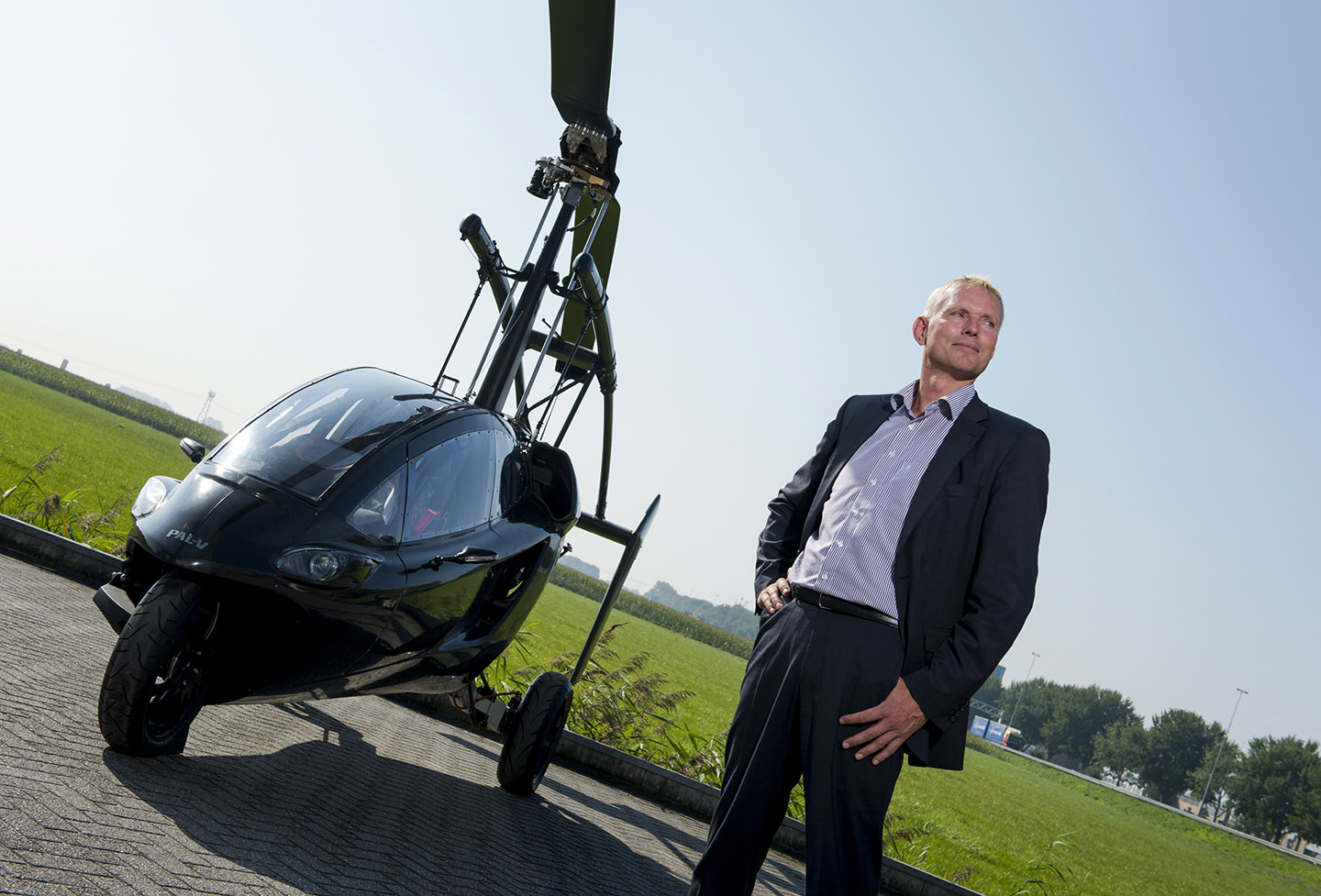It drives like a motorbike and flies like a helicopter. The ultimate boy’s toy, flying car PAL-V, will be presented on the Geneva International Motor Show. Will this be our deliverance from daily traffic jams? TU Delft researcher Joris Melkert doesn’t think so.
Developer Robert Dingemanse next to the PAL-V. Dingemanse is a TU Delft alumnus. (Photo: Marco de Swart)
The PAL-V Liberty is the world’s first commercially available flying car, said PAL-V’s sales director Marco van den Bosch in a meeting at KIVI last Wednesday.It will be presented at the Geneva International Motor Show in March. Its specifications make engineers drool with joy. The 100 hp engine accelerates the helicar to 100 km/h within nine seconds and allows a maximum speed of 180 km/h. The flight engine produces 200 hp of power and enables take-off within 330 metres. The maximum flying altitude is 3.5 kilometres and the range is about 400 kilometres. The PAL-V accommodates two persons, has an empty weight of 660 kilograms and a maximum take-off weight of 910 kg.
The idea for building a flying car dates back to 1999, and the company PAL-V in Raamsdonksveer was set up to commercialise the concept in 2007. A driveable concept was presented two years later and the drive-fly combination in 2012. It proved the technical feasibility of the flying car and certification within existing regulations for road and air traffic. Assuming you have no problem with the price tag of 500,000 euros, will this be your deliverance from the daily commuting traffic jams?
Melkert suspects that PAL-V targets countries with more room
“Suppose you get stuck in traffic on the A13 to Rotterdam,” says Joris Melkert from the TU Delft Faculty of Aerospace Engineering. “And you’re lucky enough to drive a PAL-V. You can just leave the crowd behind and fly over the rows of cars. All you do is stop and wait a while to create room for take-off. You fold out the wings and prepare for flight. Shortly after take-off, you’ll have to avoid overhead signs and cameras. Full throttle and nose up. You cannot dodge right or left because there are buildings everywhere that you’re not allowed to fly over. Then, near Rotterdam, you’ll approach the flight path of Rotterdam Airport, which, of course, is a big taboo. So, no, PAL-V will not free you from traffic jams.”
Melkert knows PAL-V developer Robert Dingemanse, who studied at TU Delft in the eighties, and his team since the beginning. Melkert notices strong investment behind the PAL-V company. He suspects that PAL-V targets countries with more room, both physically and judicially. Melkert mentions Australia and the United States as examples of where the first flying cars may emerge.
Do you have a question or comment about this article?
j.w.wassink@tudelft.nl


Comments are closed.